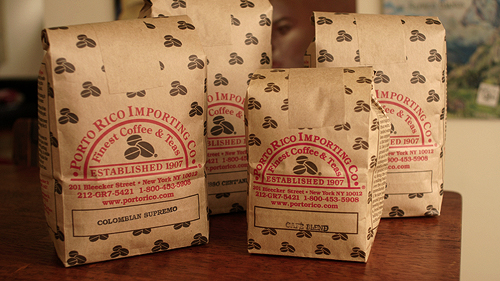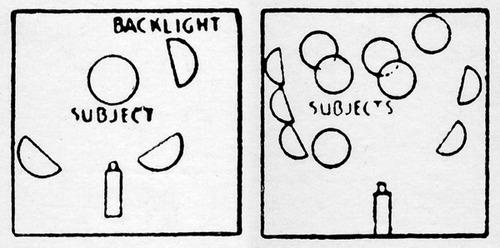
Tag: misc
New York, New York
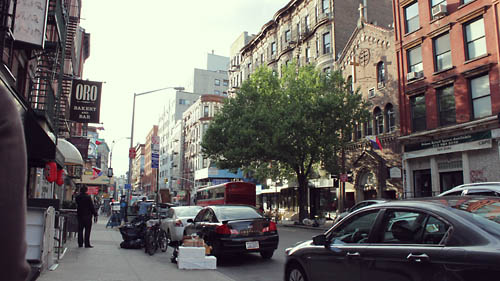
Thanks to everyone we met up with during our quick trip to the city this last week. We are always so fortunate to meet up with such great people whenever we are there. And in some cases, funny how it takes a trip 2000 miles away to finally get together with those that might as well be our neighbors here at home.
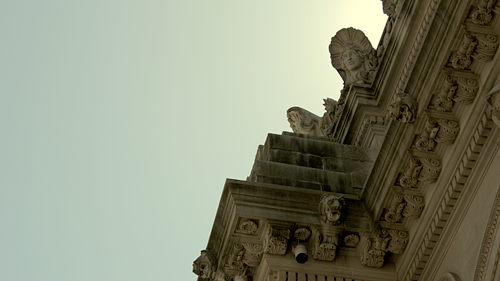
To all the creatives, producers, animators, directors, and partners we spent time with, we extend our heartfelt thanks and appreciation for taking time out of your busy schedules to host us for food, drinks, and conversation. If any of you make it out West to our little piece of the world in the near future, don’t hesitate to let us know so we can return the favor and hospitality.
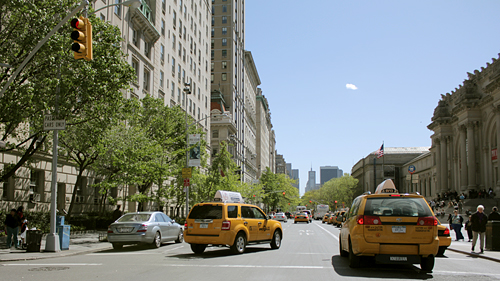
It’s the people that make up a city, and NYC is lucky to have you all as its representatives.
Best and see you soon.
Kelly & Daniel
PDX to NYC

We’ll be visiting NYC for a few days next week. If you’re there and would like to get together and grab a drink or coffee, just fire us an email and we can set something up.
_

Funny to see this as the headline today on The Huffington Post.
Observations from the Road (House)
Road House (1989) view trailer
Forget whether it’s good or bad, high art or low brow, or even if you’ve only seen snippets as you browse the cable dial. Essentially the core of the story and it’s main character Dalton, as performed by Patrick Swayze, have been co-opted by contemporary “reality” television shows and is being used over and over again with a different pseudo-celebrity in slightly varied situations.
The Expert Speaks…
In this classic scene, we see what makes up most of the cultural cliché and sets up the rest of the material.
It has become textbook and here’s how it works… An expert is recruited by an individual who’s business is failing, or at least requires restructuring to survive. Said expert, though initially appearing either too small, too female, or too brash, then observes the business in its normal routine of operation. Usually, this is slightly covert and low pressure or at least presented as such. After witnessing first hand the shortcomings of the staff and the owner, the expert gives their speech and introduction where, with mild emotion, they curtly state how things will change. Or, as Dalton says, “It’s either my way or the highway”. A boring threat, but still a threat nonetheless. As the new plan is put in place, some have difficulties while others excel. Some are verbally destroyed while others well with emotion and are praised. These highs and lows proceed until the expert leaves after having giving those who remain the tools to carrying on.
This isn’t necessarily a narrative canon crafted solely by Road House, but it has been an example so culturally absorbed that it stands out as a prime reference. Sure, movies involving military enlisted and drill sergeants hit some of the same notes, but the soldiers go off to battle alone and do not fight along side their teacher as in Road House. And they don’t contain easy to pocket phrases like “right boot” and “pain don’t hurt” which, since their creation, have been passed endlessly between friends when out at a bar. So ingrained like the words and actions of other cult films, often the origin is forgotten and unknowingly reinterpreted in other media without credit or awareness of their prior existence.
Unreality “reality” shows have followed and developed a few subgenres of their own. Romance, physical abuse, quasi-dramas, roommates, sleep crime, food assault, face humiliation, etc. Focusing on the shows featuring an expert at their center, they differ only from Road House in that nobody has their windpipe torn out through their neck and, so far, blades have been kept off footwear.
These experts put on in such a way that they even further diminish the idea of reality in a “reality” show. Swayze’s Dalton may come off as unbelievable, underdeveloped, or emotionally shallow, but this character of fiction may have more dimension than the people who claim to be real world experts and who allege ignorance of the cameras that capture them.
Do we care if a restaurant owner is unbalanced? Do we care that salon X in Anytown, USA has a bad receptionist? Do we care that immature parents can’t manage their own children? Of course not, and we don’t care about a struggling Missouri bar either, but it hasn’t been sold to us as an insight into real people with real lives that aren’t receiving monetary compensation for their appearance. It has been presented honestly, as a made up story full of made up characters.
What is surprising is that despite Road House being a work of fiction, its effects on pop culture may be more genuine than the reality we’re offerred by these modern day charlatans pedaling their arrogant brand of expertise and ripping off Dalton all the way to the low budget bank.
Or not. Who knows? But, take Dalton’s advice and perhaps we make the world a better place.
“Be nice.”
In the future, you’ll buy everything again.
This assumes you know and have seen the 1975 film Rollerball (dir. Norman Jewison). If not, then get to it. Everybody’s waiting.
It’s a problem all futurists deal with. How do you predict the future when you live in the present? Surely, written authors are let off much easier than those working in visual mediums like illustration and film as their predictions have much more leeway in the mind’s eye of their audience. Maybe if Nostradamas had to paint a representational picture with shapes and forms rather than drafting vague generalities with words, we’d be less burdened by cheap cable programming and tabloid stories that parade his name and others like him as genius soothsayers to be considered only after an event can be found to match conveniently with their texts.
Film is different. You can’t simply describe a future technology, monster, or philosophy with words. No, that’s left to the writers and re-writers. At some point the audience has to see what the future-beast that attacks Neo-Portland looks like or the car-like vehicle that drives sideways like a crab rather that straight ahead like all us present day primitives are accustomed. With special effects, clever photography, and design we are privileged a glimpse forward and in some cases it indeed feels not only possible, but briefly even real.
Time passes. The years depicted roll by and frame the futurists’ view differently. Some are shockingly accurate, while others fall short. Rather than imagining brilliant possibilities, the work now stands to show the shortcomings of our predecessors’ imaginations. The older among us remember their original interpretations, while the younger sneer and snicker at the ridiculousness of it all.
A half human, half machine police officer drives a Ford Taurus? (image 1987 Robocop)
Fax machines are still common in 2015’s Hill Valley? Examples easy to grin at when your timeline continues forward, unlike the film itself which is forever locked to the time in which it was completed. (image 1989 Back to the Future II)
Specifically, the 1975 film adaptation of the story The Rollerball Murder by William Harrison, released simply as Rollerball, is considered here against the above observations. So easy it would be to dismiss its visual depiction of the near future as inaccurate and more 1970’s than 2018, but instead consider all its perceived faults as minor art directed moments of genius. Skew your point of view just a couple degrees, and look past the dystopian canon of corporations taking over world government while oppressing the individual, and instead focus on what is in the frame. These aren’t antiquated ideas of the future. No, this is a future where the past is embraced with unspoken irony and can all be purchased at minor cost in a future Urban Outfitters, which could easily be one of the competing corporations that rival Energy Corp.
Rollerball is not just a film set in the future with futuristic details, but rather a film set in the future with a western culture that has a penchant for a retro-future vintage lifestyle. The brilliance of this though, is that it could only be noticed and appreciated over thirty years from its creation. Truly, a future destiny fulfilled.
Countdown –
The font used for the film’s titles, jersey numbers, and scoreboard insets is so obviously future-retro that to dismiss it is to misunderstand it. Even today, contemporary sports teams wheel out the vintage jerseys from time to time as a nod to the past and a nod to increased merchandise sales. In the film’s timeline, the use of a font like Countdown (1965, Colin Brignall) would have to be intentionally ironic and self-aware, since it was already ten years old by the time the film was completed and will be 53 years old by 2018. The automatic overuse of typefaces like Helvetica and Gill Sans to indicate minimalist precision would have become so tiresome in the 2000’s that designers would surely be reintroducing styles once thought ‘lesser than’ and trivial in their own day. Hence, a typeface like Countdown becomes not only appropriate, but possibly even ‘correct’. In any case, we’re waiting for our film-accurate long sleeve shirts to arrive if anyone out there is producing samples. Number six and number nine, please.
Game Environment –
A velodrome? Oh, how very rollerderby. How very 70’s. But, look closer and the track has been adjusted from an oval to a circle to help break from past sports. Look at how the square boxing ring has been co-opted by wrestling leagues and then its sides multiplied by two, thus forming the octagon of current blood sports. In light of this modern precedent, this redesign seems rather prophetic.
Transport –
Those combustion engine motorcycles? Even in the 1970’s, an energy economy based on oil and refinement was beginning to find mainstream scrutiny. Perhaps this is also a bit of nostalgia from the future where technological advances like electric motors have come into their own, but tradition overrides their acceptance like wooden bats in baseball or ice surfaces in hockey where modern synthetics and technological advances could provide more accurate consistency and more environmentally friendly manufacture.
Violence –
Even the violence depicted is strikingly similar to modern blood sports. At least two players are shown being intentionally concussed towards death and brain damage by the other team. And presently, what could be more directly brain damaging than obstructing a person’s airway as with raw strangulation and the championed submission holds witnessed on countless modern cable television channels where modern gladiators compete?
Videophile –
In Jonathan’s modern home, we observe him using a then vintage 4:3 television where he watches replays and home movies shot in film. How many lo-fi film cameras are still being offered up by resellers of pop culture accessories? How many people still hoard discontinued super8 film stock? Cameras like the digital Exemode sq28m or the updated Holgas and Diana toys are still sought by many who are happy to moderately overpay for the privilege with companies happy to oblige. Like modern audiophiles who live for silk belted, glass plattered turntables, so to will the day come that aficionados will proudly claim the superiority of a 4:3 ratio and composite signals, happily wallowing in the aesthetic of such items and the memories they can conjure.
Validation –
Some may argue that there is still little evidence of the film’s own self awareness and that these are all simply dated interpretations of the future. To that, one only need to look to a scene where players and their corporate concubines convene in an open meadow during a party thrown in their honor. In high spirits, they begin firing a weapon that looks like a common handgun, but in a single shot can destroy a mature conifer tree.
Happily, they do this several times. Evidently, shooting firearms is still an enjoyable pastime eight years from now. If this level of weaponry is available to a common person in a society under such top-down control, then it must be a culture that has advanced far beyond that which is shown during a Rollerball match. From this, one can gather that a population that can develop and casually use sophisticated technology like this has no reason not to be as culturally sophisticated as well. The warm, techno-vintage vibe of the mid 1970’s specific brand of futurism may be a hot ticket after endless exhaustion of 50’s, 60’s, 80’s, and 90’s style. The 90’s will have their secondary rebirth a bit later. Save your eMates, you’ll need them to remain relevant.
Sure, there’s the actual core story to the film about the individual versus the state, but all that goes without saying and with watching the picture in its entirety.
That said and you still don’t buy Rollerball as an underestimated oracle of man’s future with regard to style, pop culture, and cyclical styles? You will when your local screenprinter is cranking out orange shirts with stylized numerals on the front and reverse, selling out of number ‘6’. And, when in Japan, make sure to look for the yellow version. The circle will be complete and you’ll be there just in time to take a half-frame photo of it all for proof.
Hello Porto!
